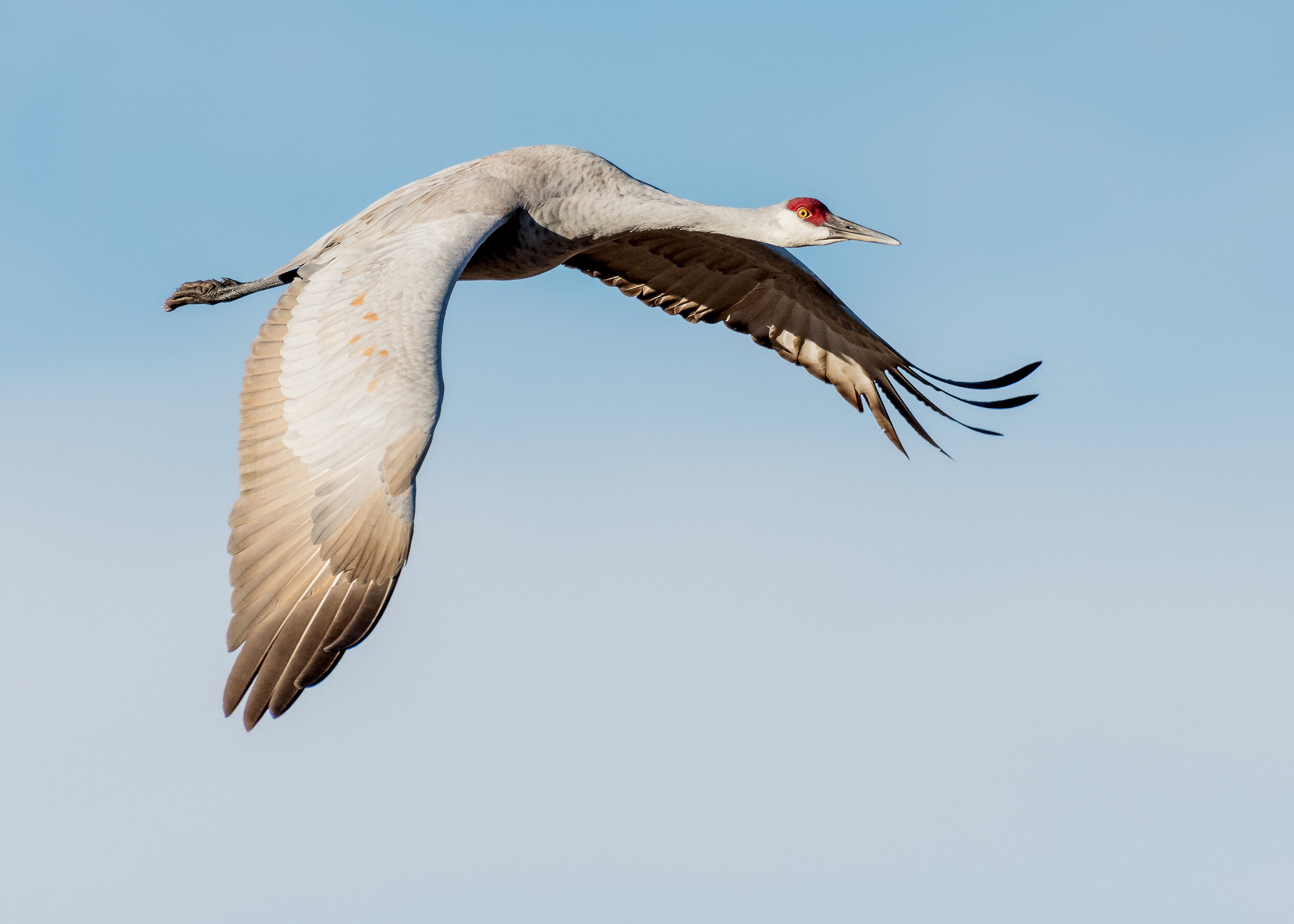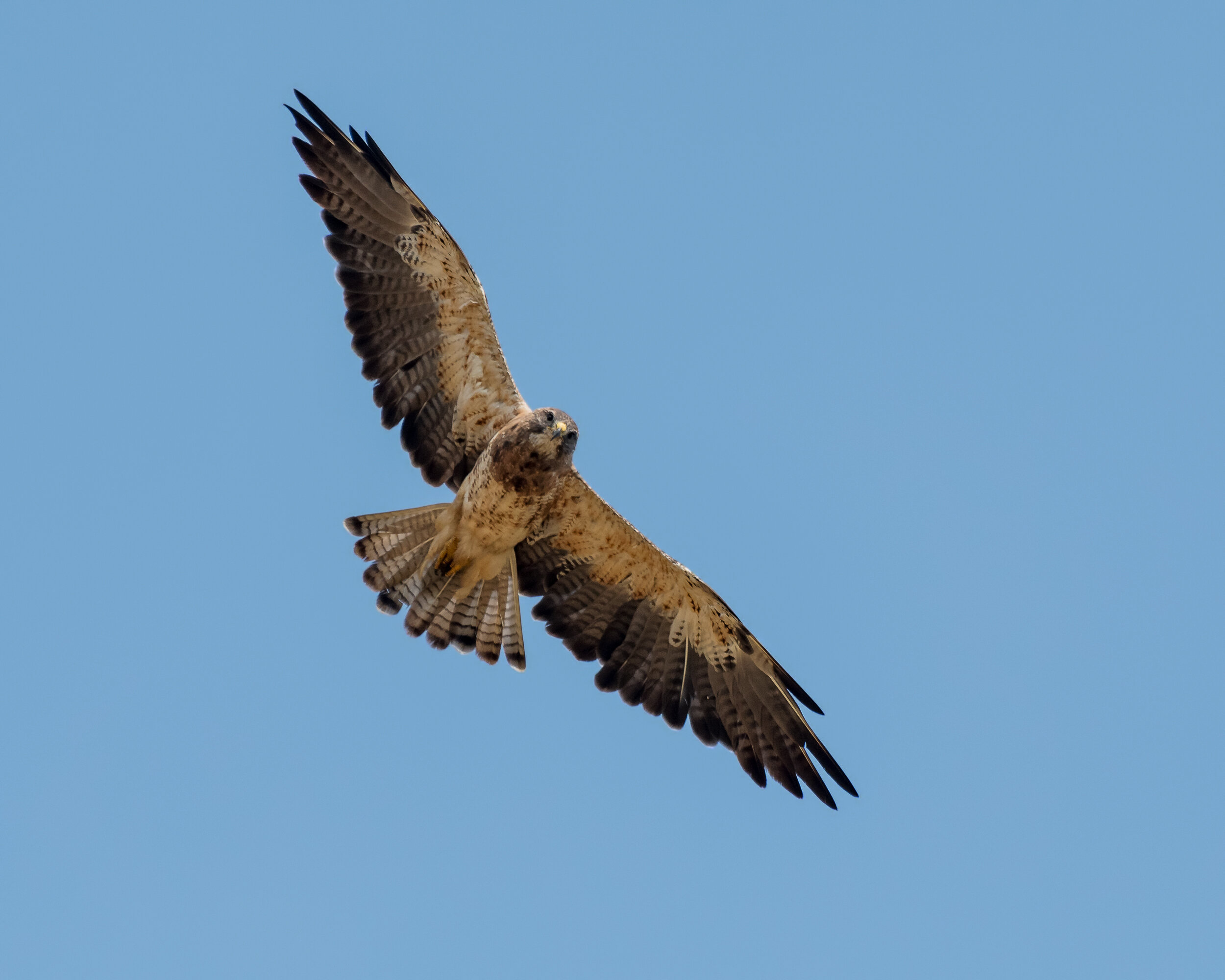San Joaquin and Solano Counties
To use the map above, click on any point. You’ll find the name and a brief description with a link to additional information. Alternatively, you can click on the square with an arrow in the upper left hand corner of the map to open a complete list of all the locations on this map. The map is easier to use if you enlarge it by clicking on the partial square in the top right portion of the map.
Fees and directions may have changed. If you have recommended changes for a location, please email them to the Web Committee.
San Joaquin County
This is one of the most accessible areas to observe large numbers of Sandhill Cranes. From October to March, many fields in this area are flooded and filled with Sandhill Cranes, wintering shorebirds, and waterfowl.
Staten Island is an excellent site for viewing large numbers of Sandhill Cranes, geese, Tundra Swans, other waterfowl, and shorebirds.
During summer months, you may find Swainson's Hawk, Western Wood Pewee, Ash-throated Flycatcher, Northern Rough-winged Swallow, Black-headed Grosbeak, Lazuli Bunting and Bullock's Oriole. Birding this area in winter may turn up Red-breasted Sapsucker, Hutton's Vireo, Red-breasted Nuthatch, Brown Creeper, Pacific Wren, and Golden-crowned Kinglet.
Lodi Lake Park is truly one of the premier birding areas in San Joaquin County. This reputation is well deserved as over 200 species (over 50% of the county's total bird list) have been observed within the boundaries of this 125-acre jewel along the Mokelumne River in north Lodi.
Solano County
This magnet for birds on the Solano-Yolo County line is formed by a small diversion dam on Putah Creek several miles east of Lake Berryessa and the Vaca Mountains, the easternmost ridge of the North Coast Ranges. For best birding, visit the area early in the morning; fall and winter are most productive, due to the arrival of winter visitors.
Ferruginous Hawks, Rough-legged Hawks, Northern Harriers, White-tailed Kites and Red-tailed Hawks are quite reliable during the winter, although numbers vary year to year. Bald and Golden Eagles are occasionally found especially around the large power lines also frequented by Prairie Falcons.
This park just off of Interstate 80 in Vacaville contains nearly 500 acres. It provides excellent opportunities to find water birds and land birds. The reservoir is always worth checking, and it once produced a Long-tailed Jaeger. The trees can be very good for migrants, and a Northern Waterthrush was found here.
Banner Photo Credit: Sandhill Crane by Ray Rozema








